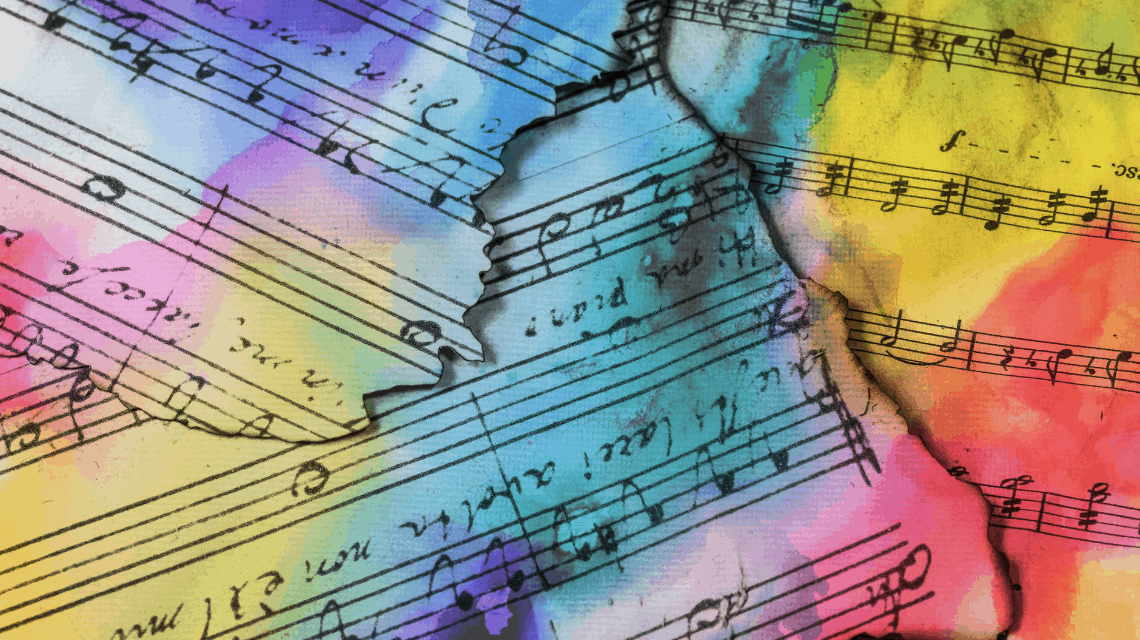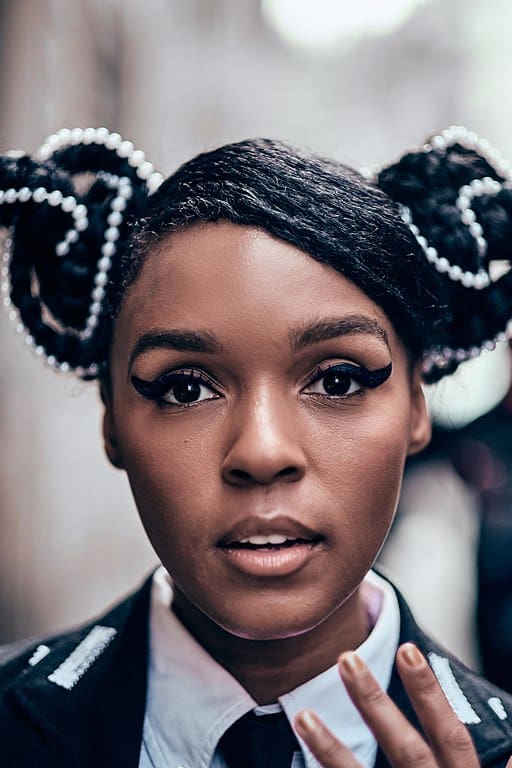Ten Important LGBT Figures in Music History
October is LGBT History Month in the United States and Canada, coinciding with National Coming Out Day on October 11.

October is LGBT History Month in the United States and Canada, coinciding with National Coming Out Day on October 11. In the last year, movies like Bohemian Rhapsody and Rocketman have highlighted the stories of some of music history’s most prominent queer figures, but Freddie Mercury and Elton John – although distinguished in their own right – are far from the only LGBT people who have had indelible impacts on music history. Here are ten other names worth remembering and celebrating.
Josephine Baker

Josephine Baker would probably be renowned for any one of the ways in which she made a name for herself. She was a resistance agent in Nazi-occupied France in World War II, using her entertainer clout and access to hobnob with dignitaries and transmit notes through invisible ink on her sheet music. She also spoke at the March on Washington alongside Martin Luther King Jr. and was active in the American civil rights movement. However, Baker first rose to fame as a singer and burlesque performer in France, starring in La Revue Negre beginning in 1925, at only 19. Despite being married to men four separate times, she was bisexual, at one time having a relationship with fellow blues singer Clara Smith. Additionally, she adopted twelve children, dubbing them her “Rainbow Tribe.”
Lorenz Hart

Richard Rodgers’ songwriting partner before Oscar Hammerstein, Lorenz Hart penned the lyrics for some of the best-known jazz standards, including “Bewitched, Bothered, and Bewildered,” “Johnny One Note,” “My Funny Valentine,” and “The Lady Is a Tramp.” His lyrics were praised for their technical sophistication, but Stephen Holden of The New York Times also noted the deep loneliness and vulnerability lurking beneath the surface of some of his biggest lyrical triumphs. Hart remained closeted his entire life.
Sister Rosetta Tharpe
Sister Rosetta Tharpe was a founding mother of rock and roll, not only predating but inspiring musicians like Elvis and Little Richard. She made her first recordings with Decca at 23, including her first big hit “Rock Me,” but she’d been playing guitar in religious settings since she was a child, influenced by her gospel-singer mother Katie Nubin and her church’s founder, Bishop Charles Harrison Mason. She showed off her chops against male musicians in guitar battles at the Apollo Theater in New York, as her biographer Gayle Wald reports. Her use of electric distortion in some of her later recordings like “Strange Things Happening Every Day” is an obvious precursor to rock guitar. Like Josephine Baker, Tharpe was married to men multiple times (including one heavily-attended wedding to her manager), but some unnamed peers told Wald about Tharpe’s liaisons with other women. Tharpe was inducted into the Rock and Roll Hall of Fame in 2017, dubbed an “Early Influence.”
Billy Strayhorn

Although Lena Horne considered him the unrequited love of her life, Billy Strayhorn was openly gay, having at least two long-term partners in Aaron Bridgers and Bill Grove. Strayhorn was indispensable to Duke Ellington’s career, writing the band’s seminal theme “Take the ‘A’ Train” and collaborating with Ellington on songs and albums ranging from “Satin Doll” and “Day Dream” to Anatomy of a Murder and Such Sweet Thunder.
Aaron Copland

It would be difficult to overstate the impact Aaron Copland, the so-called “Dean of American Composers,” had on 20th-century music. Copland’s influences were international – renowned teacher Nadia Boulanger was arguably his most important influence; his circle of friends included musicians, artists, and writers of all kinds; and he traveled extensively, absorbing the music of other cultures in the process. Ultimately he chose to write music for and about the American people and experience – music that reflected the ideas of America and American democracy, borrowing and incorporating folk songs of the Americas, cowboy songs, and hymn tunes into his music. He garnered some criticism for this approach, notably from journalist and critic Paul Rosenfeld, who characterized him as “standing in the fork in the highroad” between commercial and artistic renown. Copland never lost sight, however, of the “simple gifts” of music (forgive the pun). While Copland never officially came out as gay, preferring to leave that up to Leonard Bernstein’s generation, he had multiple relationships with men throughout his lifetime.
Brian Epstein

It’s safe to say that Brian Epstein pretty much made The Beatles. Epstein had no background in artist management — he hailed from a Liverpudlian family of retailers — but he had an undeniable instinct that the scruffy, leather-jacket-clad group of boys he saw performing for the lunch crowd at the Cavern Club in 1961 were meant to hit it big. Their now-iconic bowl-cuts-and-suits aesthetic was Epstein’s doing, as was their first record deal. The Beatles had been turned down by basically every record company, but Epstein smartly used some family connections to get them a deal with Parlophone, which released their first record Please Please Me in 1963. It was hardly a secret that Epstein was gay, but The Beatles certainly didn’t care, not when Epstein had singlehandedly kickstarted their career.
Wendy Carlos
Wendy Carlos almost became a physicist, but instead she turned to music – and in a way, she was able to combine science with music in the form of electronic synthesizers. Switched-On Bach, released in 1968, went platinum – the first time a classical album had done so – and catapulted Robert Moog’s synthesizer of the same name into the public eye. Between that album and her soundtracks for A Clockwork Orange, The Shining, and Tron (1982), Carlos’s impact on electronic music is almost immeasurable. She transitioned in 1972 and disclosed this fact to Playboy seven years later.
Howard Ashman

Love Disney princesses? You’ve got Howard Ashman to thank for that. The Little Mermaid, upon its 1989 release, was the first princess movie since 1959’s Sleeping Beauty. Disney adapted Hans Christian Andersen’s tale on Ashman’s suggestion, and the movie was obviously a smash hit. With Alan Menken, Ashman went on to write lyrics for Aladdin and Beauty and the Beast before unfortunately succumbing to AIDS. (It’s also worth mentioning that Hans Christian Andersen probably wasn’t straight either. Author Rictor Norton theorizes, based on an examination of Andersen’s letters, that The Little Mermaid was a metaphorical love letter to his friend Edvard Collin.)
Teddy Geiger
Teddy Geiger started out as a mid-2000s pop-punk teen heartthrob before receding into the relative shadows of songwriting. She’s credited on such tunes as “Where Do Broken Hearts Go?” by One Direction and “Fitness” by Lizzo, but arguably her greatest professional success has come from working with Shawn Mendes. 2015’s “Stitches” was nominated for BMI Song of the Year, and Mendes and Geiger followed that up with a Grammy nomination for 2018’s “In My Blood.” Geiger came out as a trans woman in 2017, saying on Instagram, “love it or hate [it,] this is who I have been for a looooong time.”]. She’s released some of her own music since then under the moniker “teddy<3”, including the grungy “I Was In a Cult,” her take on her queer experience. “At a certain point I realized that I was born uncomfortable,” she told Rolling Stone‘s Brittany Spanos in 2018 — but being herself now is “a huge weight lifted.”
Janelle Monae

Janelle Monae initially built her public image on being an enigma, channeling metaphors for oppression and resistance into her android alter ego Cindi Mayweather. Her early albums, like The ArchAndroid and The Electric Lady, imagine an unapologetically Afrofuturist yet also distinctly stratified and dystopian world in Metropolis; the video for “PrimeTime” starts with an android being programmed to dance, complete with a designated BPM for twerking. Her 2018 album Dirty Computer, then, with its corresponding “emotion picture,” was a revelation. The plot of the emotion picture revolves around Monae’s character Jane’s resistance to being programmed, her celebration of being “dirty,” different, and ungovernable. The emotion picture and music videos are full of color as well — “Pynk” alone is a far cry from Monae’s standard black-and-white aesthetic. “Make Me Feel,” the first single, was quickly hailed as a bisexual anthem for its lighting as well as Monae’s two love interests. The day before Dirty Computer‘s release, Monae stated in a Rolling Stone profile that she is pansexual.

